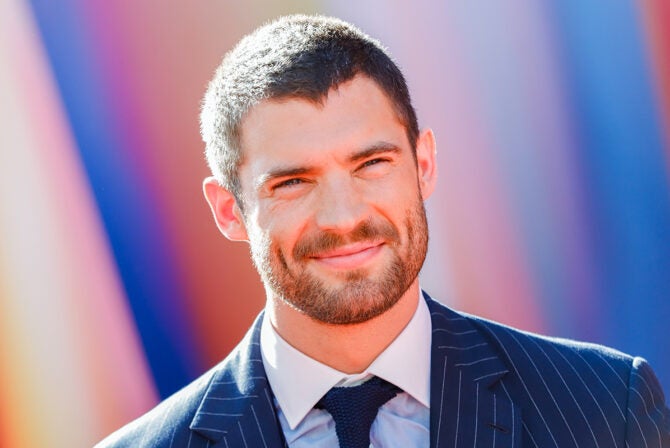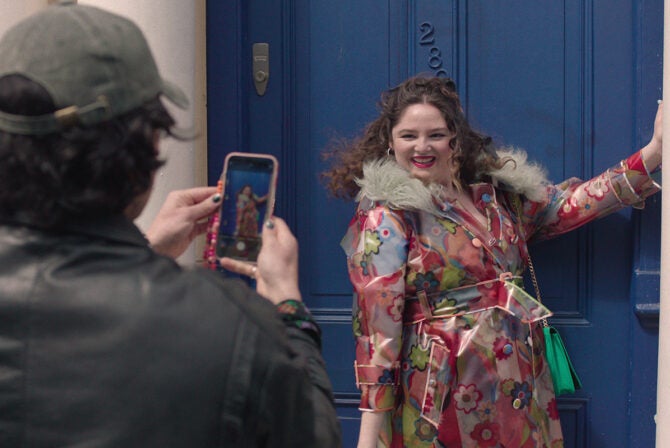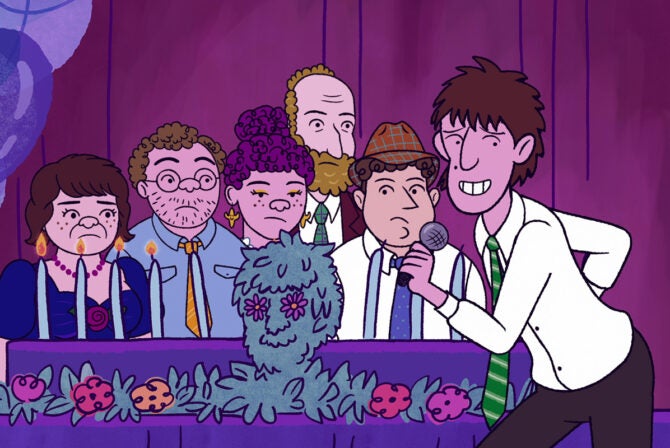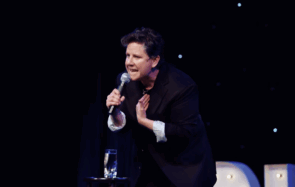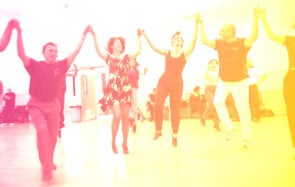The Challenge: Starting political conversations among high school students is no easy task.
The Solution: The Fight Apathy Campaign.
The Teen Hero Who’s Making This World A Better Place: Andrew Plotch—hailing from Fair Lawn, New Jersey—was sick and tired of hearing about the latest tabloid news and complaints from his peers about feeling powerless. Andrew has always believed in the power of each individual and was determined to bring his high school friends along on his mission to affect the world positively.
He started the Fight Apathy Campaign with a brilliantly simple idea: stickers. Andrew brought fill-in-the-blank stickers for everyone in his school that read, “I believe in…” Students were told to write whatever they wanted and then wear the stickers for the rest of the day. The intention was to spark meaningful conversation about global issues. And it certainly did.
READ: Meet the Jewish Teen Who’s Breaking Down all the Barrier for Kids with Special Needs
For the Fight Apathy Campaign Kickoff Event at Andrew’s New Jersey high school in 2011, there were more than 700 teenagers involved. In the four years since then, Andrew has expanded his campaign to include more than 150,000 students from the U.S., Guam, American Samoa, Ecuador, and China. The stickers have started conversations all over the world, including virtually, with the hashtag #FightApathy. Andrew’s passion and commitment prove that we each have something to say and together we can make a positive difference. He is so grateful to the Helen Diller Family Foundation for recognizing his efforts and giving him a Diller Teen Tikkun Olam Award.
We asked Andrew about this inspiring campaign.
What’s your favorite food?
Ice cream. My favorites are mint chocolate chip and Ben and Jerry’s Phish Food. Luckily, I go to school in Vermont, not far from where two Jewish boys from Long Island named Ben & Jerry opened their first ice cream shop. I like to consider myself a real connoisseur of all desserts, though, especially flourless chocolate cakes.
Who is your favorite author?
Tim O’Brien’s “The Things They Carried” speaks to me every time I read it. The book is a collection of short stories based off of one man’s experiences revolving around the Vietnam War. Each time I read it I find that I connect with one or two of the stories depending on what is happening in my life at that time.
Who is your favorite activist?
Malala Yousafzai has overcome challenges I could never imagine and still became an 18-year-old feminist Pakistani girl who has changed the world. What she has done is absolutely amazing, and there’s no right way to describe the role model she is to anyone who learns her story.
How did you think of the fill-in-the-blank sticker idea?
In 2011, my sophomore year of high school, I was in Lower Manhattan at Occupy Wall Street. As I looked around, I understood I was surrounded by people who cared about policy and current events. I immediately wanted to bring that energy and spirit back to my New Jersey public high school. I envisioned a day when students would walk around the hallways discussing real world issues.
I had an idea for simple stickers that would enable students to share their personal beliefs. I hashed out the idea with some friends involved in our chapter of the Junior Statesmen of America and developed a plan for an event called Fight Apathy where we would hand out stickers to students with the prompt “I believe in…” Students would fill out the stickers with their own political beliefs, and these stickers would catalyze conversations.
Did you have people challenge you on the campaign? If so, how did you respond?
Every step of the way people challenged me, and sometimes it improved the campaign. Initially teachers and administrators at my school were worried that the stickers could prompt rude or inappropriate comments, a concern echoed by faculty at other schools across the country since. We asked them to trust the students to be responsible, and the students always take that responsibility seriously.
In 2014, when I wanted to take the campaign national, I told people that my goal was to get 50,000 students. No one thought I would be able to do it—my teachers, my friends, not even my mom. I overcame this doubt by having confidence that I could succeed if I put everything I had into it. If I were going to do it, then I would do it right; so I took on Fight Apathy as a full-time job, from December until March of my senior year.
One reason Fight Apathy is special is because it was built by students who have overcome challenges and doubts about what youth could accomplish. Hundreds, if not thousands, of students have worked together to defy all odds and build not just a campaign, but a movement.
What did it feel like to see your campaign take off internationally?
In 2011, I wanted to transform my school for a day, and I did. I called the first event the “Fight Apathy Campaign Kickoff” but I never actually thought it would kick anything off, I just liked the sound of it.
READ: Meet the Jewish Teen Who’s Ensuring Every Kid in Her City Has a Physical Education
Initially, I reached the people in my community; then when we went national I organized people leading their own events. Now, without directly leading the program anymore, I am still making differences in people’s lives through what I started. That’s an absolutely incredible feeling. When I hear stories from students or look at the hashtag #FightApathy on social media, I just smile. These are students whom I never met, but what I’ve done has inspired them to speak out about their political beliefs. I made a difference.
If you could sit down and chat with anyone alive or dead about Fight Apathy, who would it be and why?
There’s one person I’ve always wanted to talk to, about anything: my grandfather, my father’s father. He died when my dad was 11 years old so I never had the chance to meet him.
What has the transition been like from high school to college and what are you studying now?
The transition from high school to college is tough for everyone, because all of a sudden you’re a freshman again. I took a semester off before starting school and spent a few months working as an English teacher in an Ecuadorian public school. It was an incredible experience and gave me a much-needed break from school. Now, I am studying international politics and economics at Middlebury College in Vermont.
Who’s your role model?
My grandfather, my mother’s father, has always been a role model to me because of what he’s been able to accomplish in so many aspects of his life. He has been very successful as a doctor, scientist, and educator. However, what inspires me more is what he does for people who need his help, whether family, community members, or complete strangers.
What’s next for the Fight Apathy Campaign?
At the first event in 2011, 700 people participated in Fight Apathy, when we went national in 2014, 80,000 students joined the movement, and in 2015 the number grew to 110,000. These are great numbers, but we’re just getting started.
With the right leaders and room to grow, I think the campaign can grow by about 50,000 students annually for the next few years. As the campaign expands, I would like to see it help youth in voicing their opinions to legislators and catalyzing student-led activism initiatives and projects.
Anything else you’d like to say about Fight Apathy or your Diller Teen Tikkun Olam award?
I am honored to be a recipient of the Diller Teen Tikkun Olam Award because it shows me that I am doing something right. The Helen Diller Family Foundation doesn’t just give an award—they build a community among similarly minded people who have overcome parallel challenges in their activism efforts.


